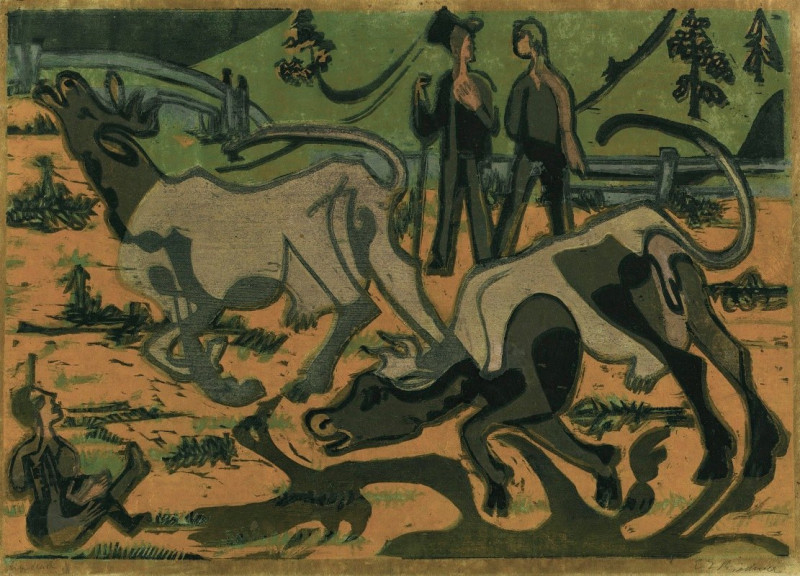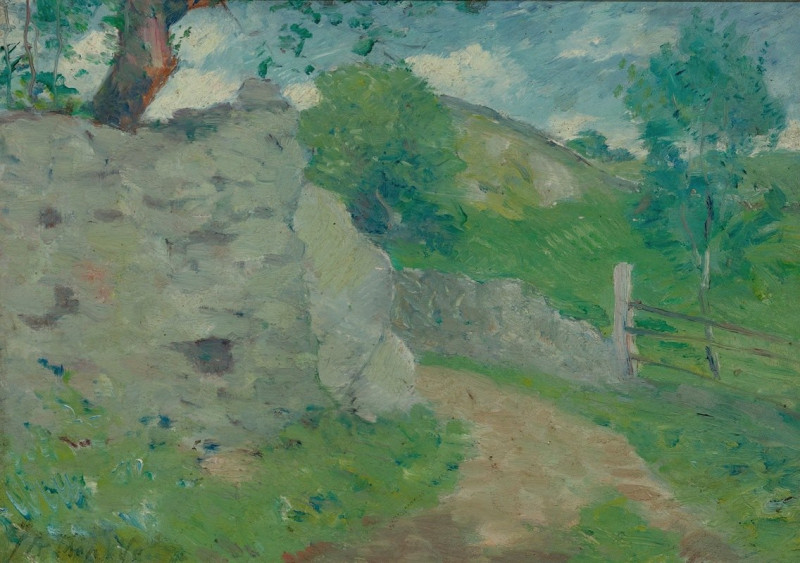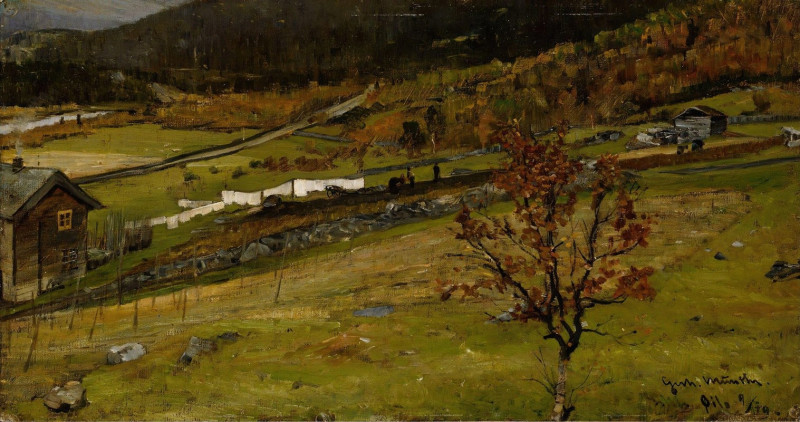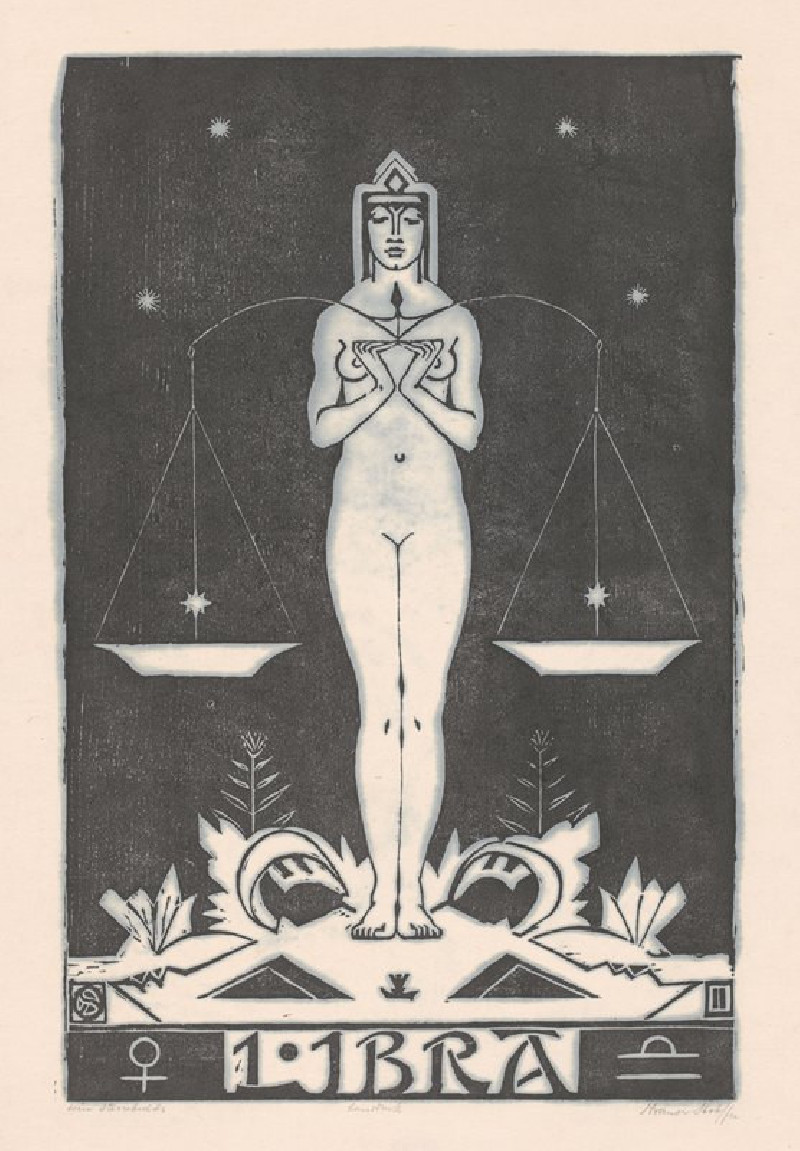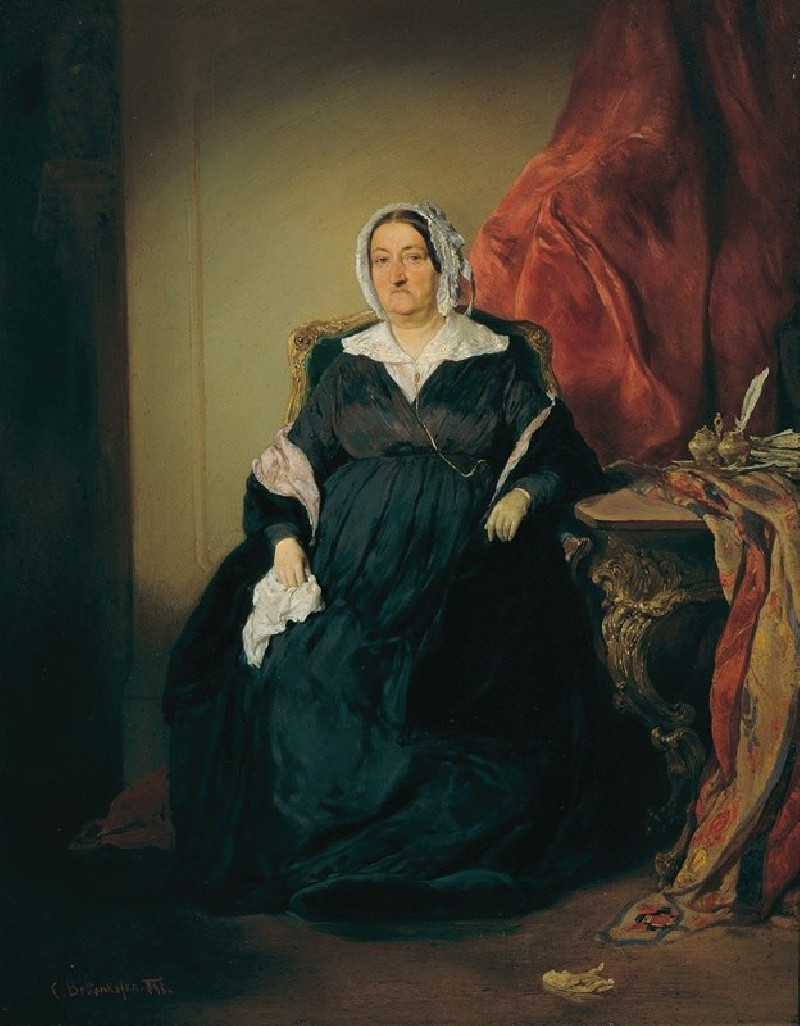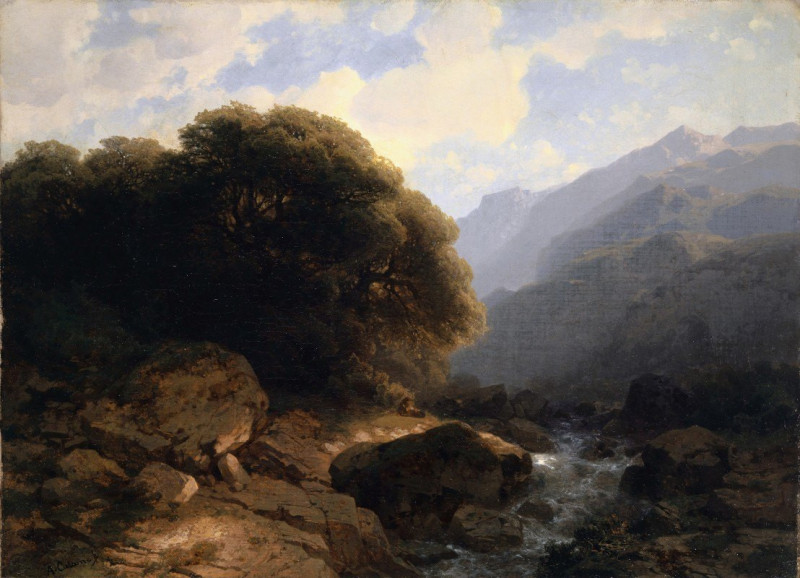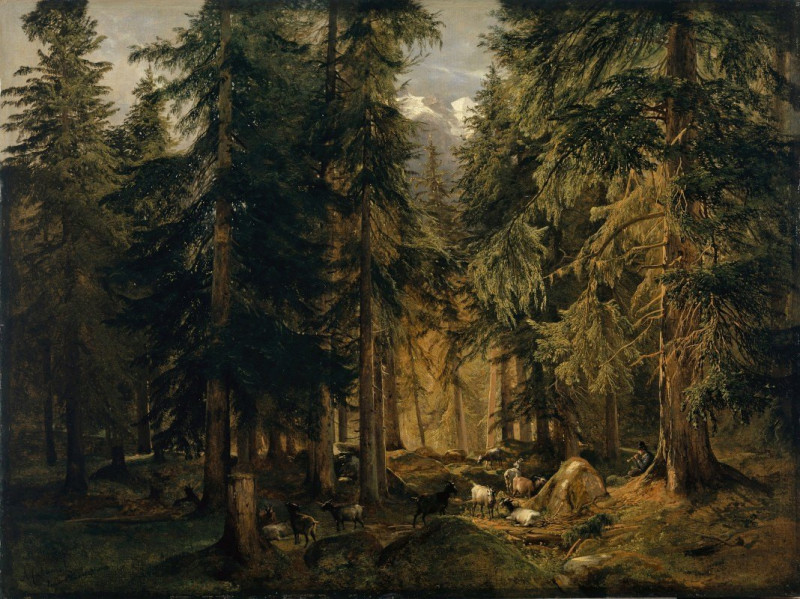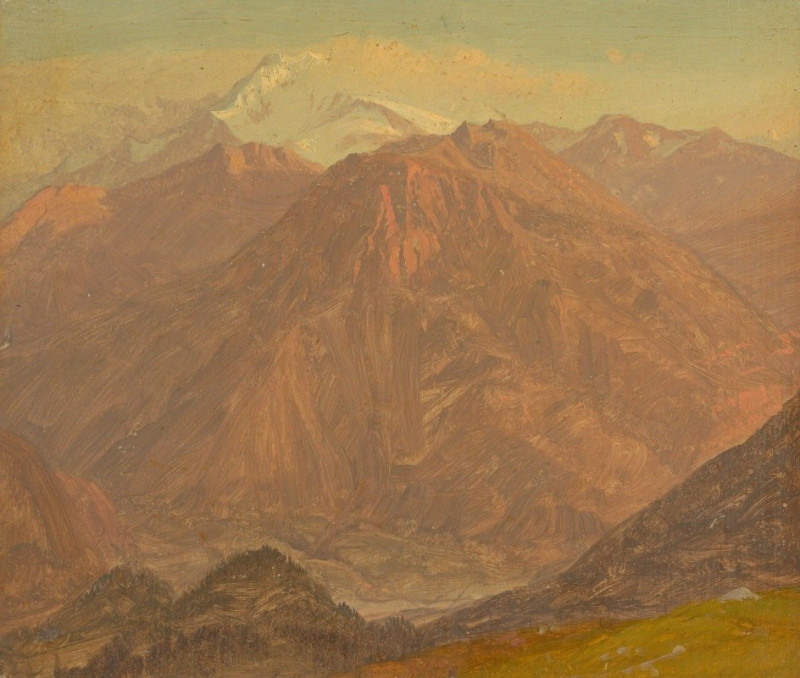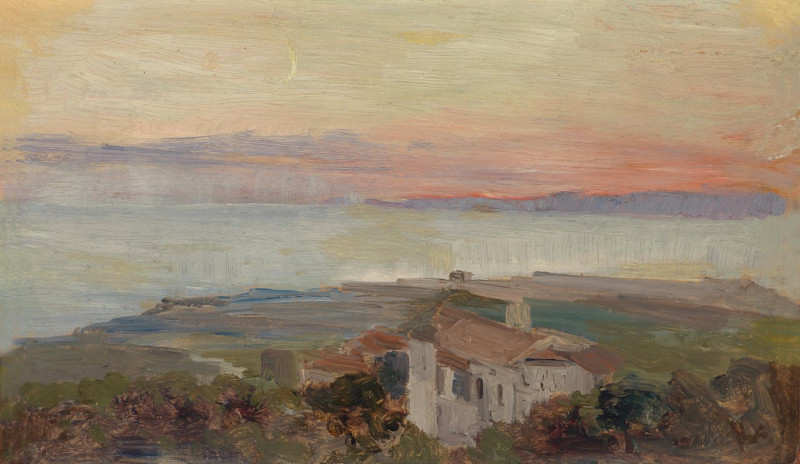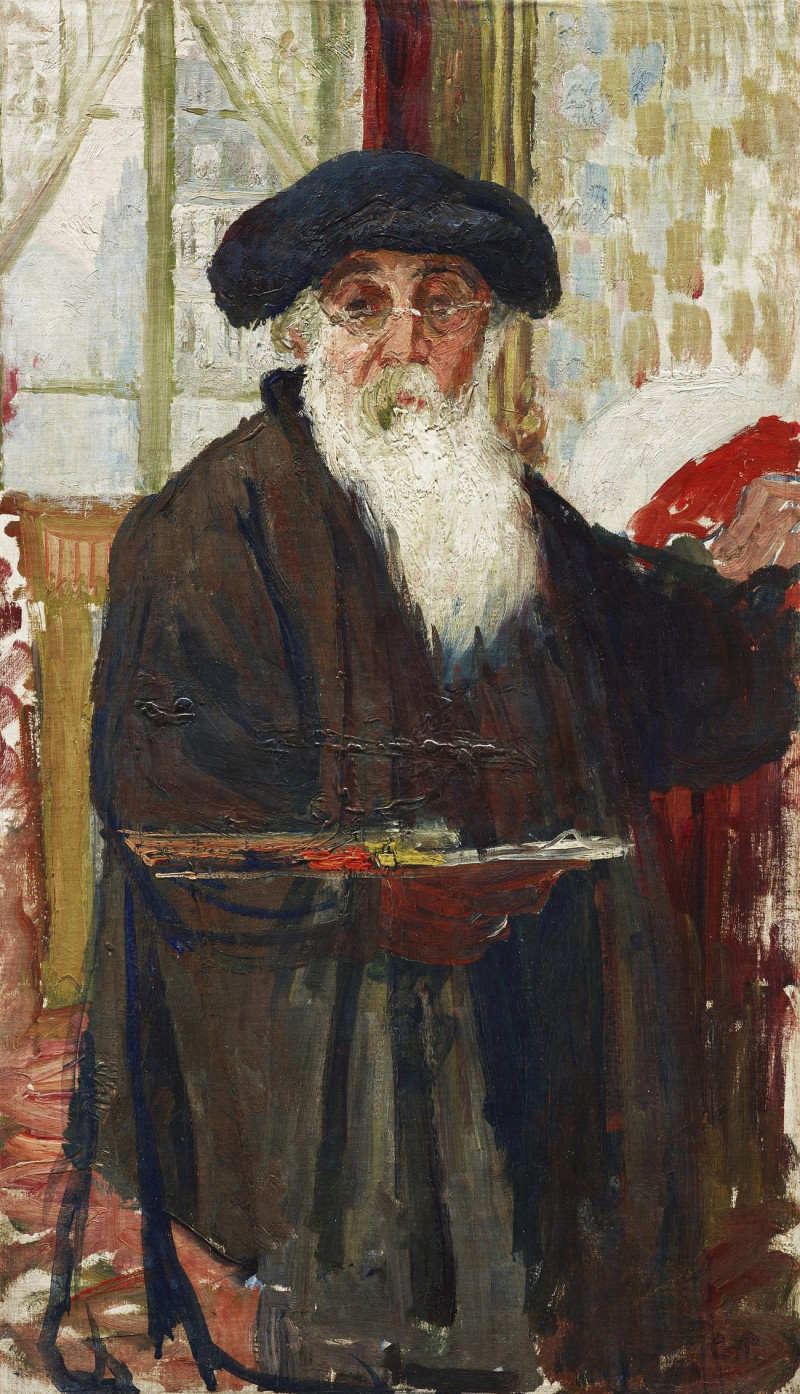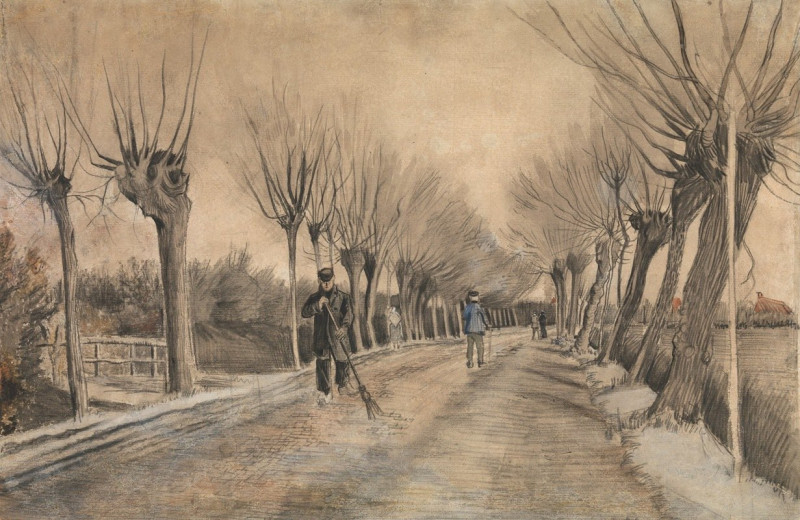Kühe Im Frühling
Technique: Giclée quality print
Recommended by our customers
More about this artwork
Ernst Ludwig Kirchner's "Kühe Im Frühling" ("Cows in Spring") offers a captivating glimpse into the pastoral landscapes that frequently inspired early 20th-century Expressionist artists. In this vibrant composition, Kirchner portrays a scene of two cows energetically engaging on a spring day, with their bodies dramatically stylized and seemingly in motion against a rustic backdrop.The colors chosen by Kirchner are earthy and rich, suggesting the renewal and vitality of spring. The use of contrasting green and orange tones enhances the dynamic forms of the cows and the landscape, giving the painting a lively rhythm that reflects the essence of the season. Two figures stand in the background, possibly farmers, observing and perhaps discussing the behavior of the cows. Their presence adds a sense of scale and life to the scene, emphasizing the interaction between humans and nature.Kirchner's technique involves bold, fluid lines and a simplified form, elements typical of the German Expressionist movement. These techniques are used to convey emotion and mood, capturing the essence of spring's vivacity. "Kühe Im Frühling" is not just a visual representation but a palpable sensation of spring’s exuberance and the timeless bond between humans and the natural world.
Delivery
Returns
Ernst Ludwig Kirchner (1880–1938) was one of the most important German Expressionist painters. He was a co-founder of Die Brücke, a group of German expressionist artists formed in Dresden in 1905. Die Brücke and Kirchner took inspiration from Vincent Van Gogh and Edvard Munch, as well as African and Oceanic art. They used woodblock printing as a medium to showcase their signature style: flat, unrealistic images with vivid colors. The recurring themes in Kirchner's artworks included exotic cultures, faraway landscapes, self-portraits, dancers and Berlin street life. His paintings and prints effectively portrayed non-European cultures despite the fact that he never traveled outside of Europe.

